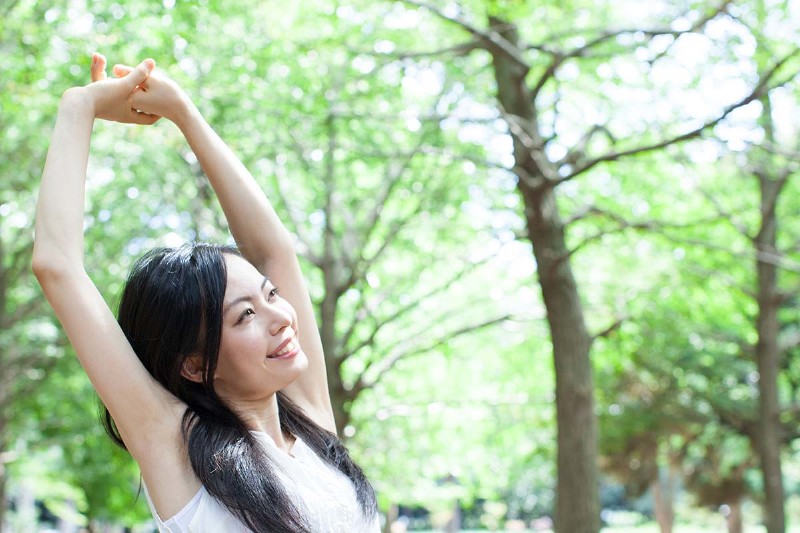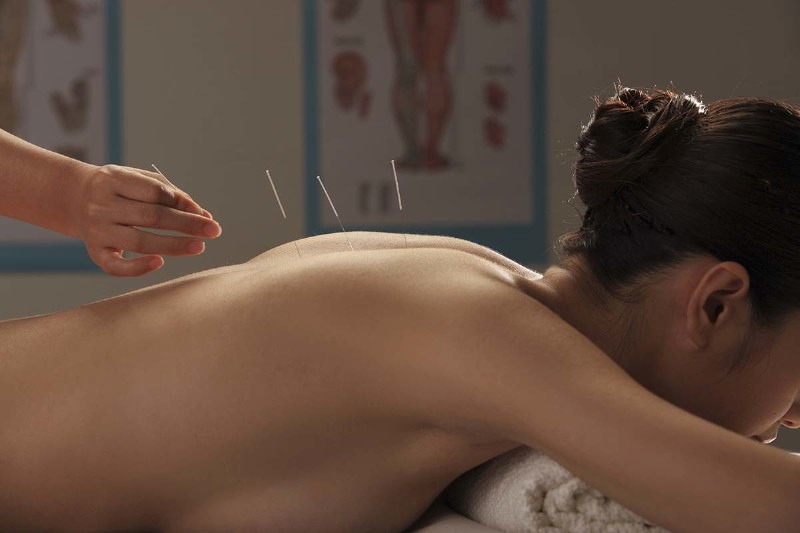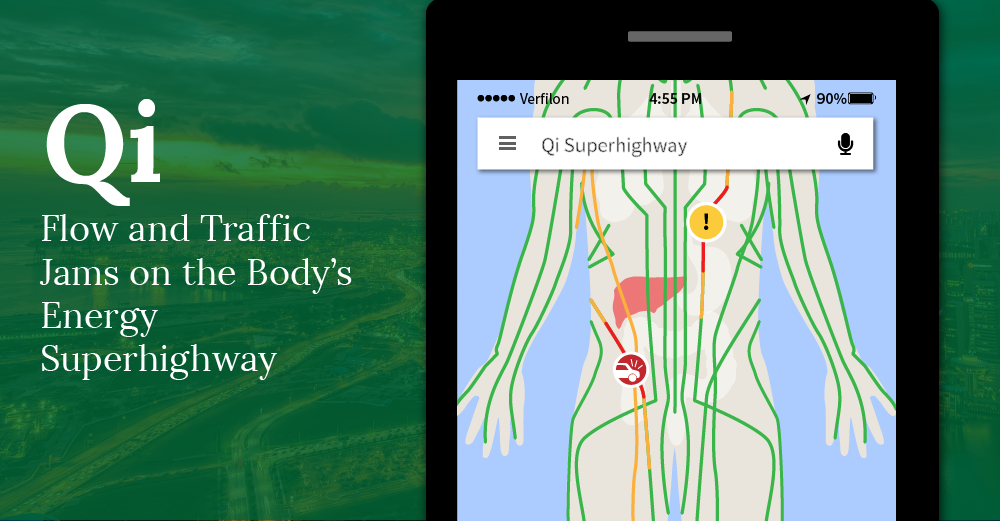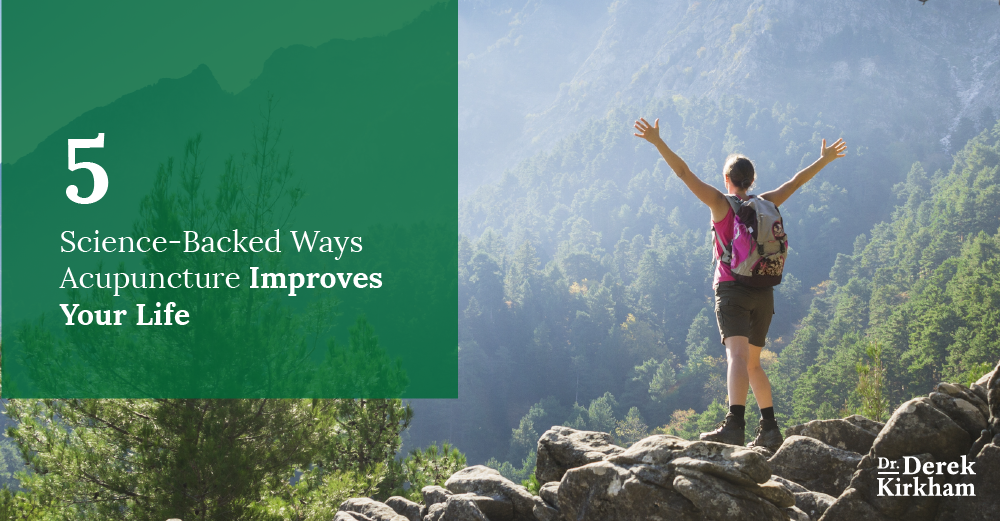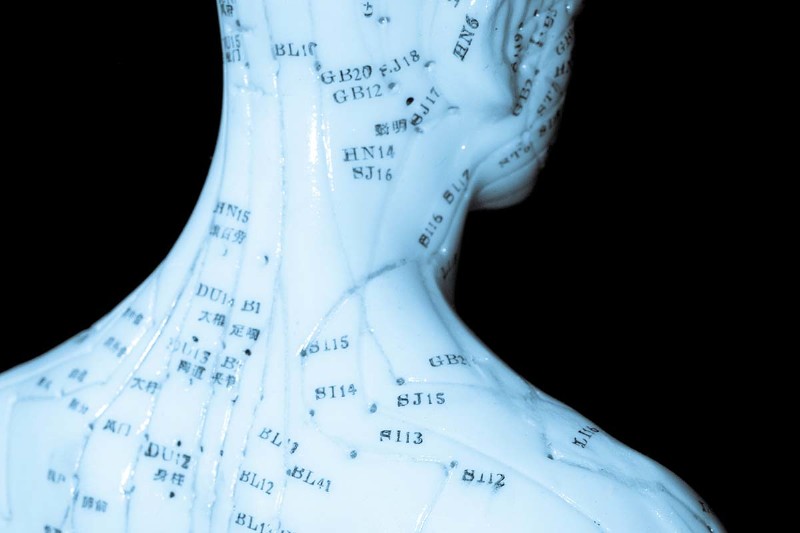Acupuncture Learning Center
Uncovering the 12 Meridians of Acupuncture
What They Do and What They Mean for Your Health
by Dr. Derek Kirkham
Welcome to the superhighway of your Qi.
The transport system of your vital energy throughout your body and organs.
And the core of Chinese Medicine and acupuncture.
Basically, meridians are a circulatory system of energy, much like the circulatory system of blood.
The difference is that instead of blood, meridians allow the flow of a vital energy called Qi (pronounced ‘chee’).
It is at once simple and very complex. There are a number of concepts connected to the whole system, and we’re going to dive into what it all means.
For example, to describe the direction of the flow of energy, the Meridian System incorporates the Yin and Yang duality. The Yin energy radiates outward, while the Yang energy returns to the core.
Another concept involving the flow is the Chinese term for meridians, jing luo. Jing means “to pass through”. It refers to the vertical meridian passages. Luo relates to the connecting tributaries. Together, they translate to “channel network.”
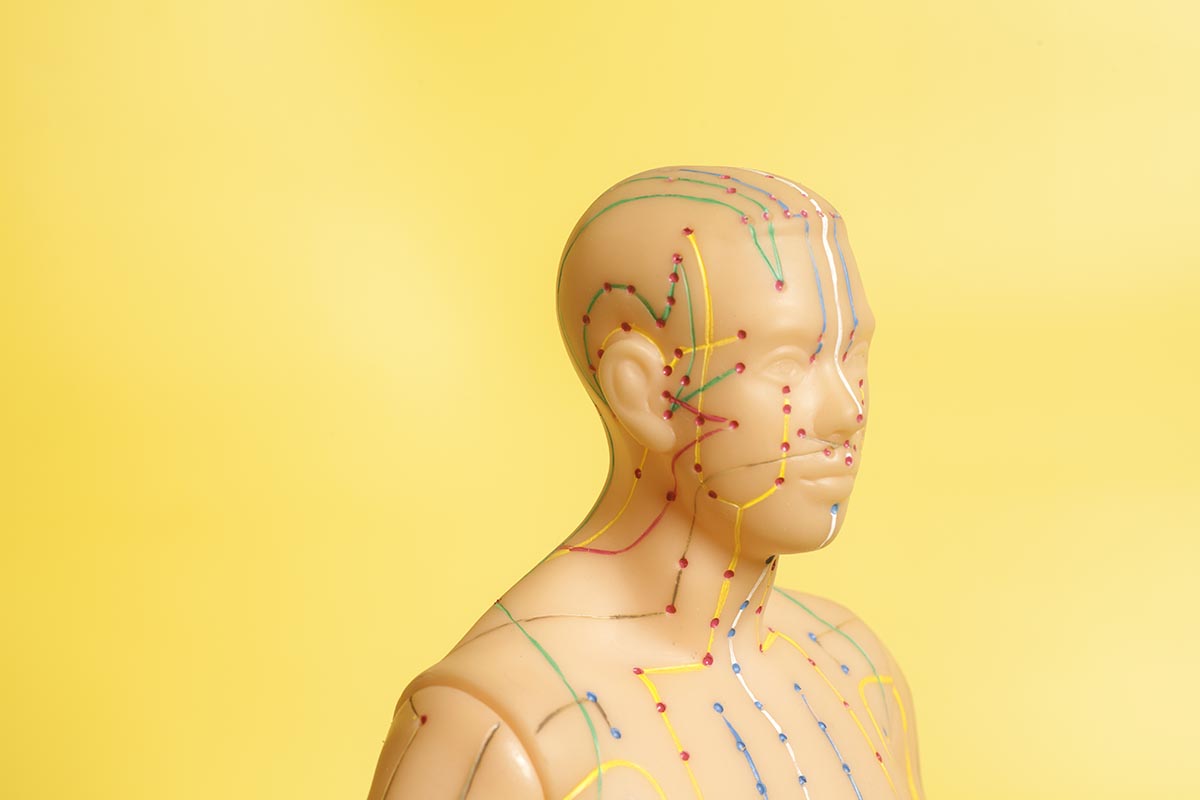
The Acupuncture Meridian System
The meridians are broken down into two categories: the jingmai and the luomai. The jingmai represents most of what people often know as the meridians. The luomai are the various connections between different jingmai meridians.
The Meridian System also follows the Five Elements theory, in which different qualities, both physical and symbolic, are grouped within five categories. This theory separates the organs into “hollow” and “solid” categories. The hollow organs are the stomach, bladder, gallbladder, and the large and small intestines. The solid organs are the heart, liver, spleen, kidneys, and lungs. Each element has a range of qualities that are used to diagnose disease and dysfunction. They also provide prognostic tools to help the body regain balance and health. While there is no scientific basis in the Five Elements theory, it is important to understand the theory for the practice of acupuncture.
Some organs are also part of the Principal Meridians, which are the twelve “standard” meridians. These are the meridians people are most familiar with. Some of these meridians correspond with a specific major organ. All the Principal Meridians run through a peripheral limb–either a hand or a foot. From there, each channel travels either up or down the body.
Additionally, there are also eight Extraordinary Meridians which are thought to hold energy and do not directly correspond with any organs. Three of these are commonly used acupuncture points.
As part of a larger system, meridians bridge the gap between the tangible body and the Qi, or energy. TCM sees this dynamic as one of the main factors controlling well-being. Through the use of various practices, including acupuncture, massage, exercise, diet, herbal remedies, and Qigong (a health practice of body postures, breathing, and meditation), this vital energy system is controlled to promote health.
This overall Meridian System is a different model than the reductive, Western biological model and is holistic in nature. In TCM, dysfunction and disease are not a result of pathology. Instead, imbalances in Qi and other energetic systems lead to health problems. And the causes of Qi imbalance, where there may be too much or too little energy, are often thought to derive from, or to have been influenced by, the patient’s own actions. Health issues are not often thought to be caused by an external source.
To help a patient, the acupuncturist examines the patient’s daily routine and compares that to the symptoms. The patient then receives a variety of treatment recommendations, some relating to diet and sleep, for example, and others, including acupuncture.
Acupuncture works by inserting very, very thin needles into the top layer of the skin. The needle then stimulates nerve endings in acupuncture points which trigger the corresponding meridian. In today’s acupuncture practices, the needles are often connected to electrodes to aid in stimulation. Modern acupuncturists may differ in the degree the ancient symbolism and methods are incorporated.
History
Acupuncture and the Meridian System has a long history that dates back over 2,500 years ago. Acupuncture is one the oldest practices of TCM along with moxibustion, which is a heat therapy that is also thought to influence Qi.
While it is unclear whether acupuncture originated in China, its practice is well-documented. The oldest ancient text that references acupuncture dates back to 100 B.C., and other texts dating back to 600-500 B.C. reference acupuncture points without procedures. Archaeologists found gold and silver needle artifacts for acupuncture in ancient tombs. The needles and the texts mentioned are the first documentation of the already established practice.
Yet, there is some dispute about dating acupuncture. An ancient mummy called the Otzi the Iceman was found in the Otzial Alps of Austria, and the mummy dates back to the Bronze Age, around 3,300 B.C. This mummy had tattoos along his body that corresponded to meridian points on the lower back. Some archaeologists suggest this is evidence of acupuncture practices. But, without further documentation, we cannot know for sure.
There are even theories that suggest shiatsu, a non-invasive form of acupuncture, dates back to the Neolithic Era. But without further texts, all we can do is theorize. Regardless, by the 4th century A.D., most modern acupuncture points had been identified with documentation. The highest levels of medieval Chinese society used acupuncture. The emperors of many dynasties even kept acupuncturists on retainer.
Medieval Chinese medical colleges even taught courses in acupuncture and the Meridian System. During the Ming Dynasty, “The Great Compendium of Acupuncture and Moxibustion ” established most of the acupuncture practices still used today.
But around the 13th century, acupuncture began to decline in status. It became associated with mysticism and seen as a less legitimate practice. Following modern, scientific medicine, acupuncture became known as a lost art in China. Right around this time, acupuncture started to see use in Europe. Still, Western medicine viewed acupuncture with some suspicion. The focus on energetic and symbolic systems felt too superstitious. By the mid-19th century, Western interest in acupuncture waned.
It was not until the mid-20th century that acupuncture would make a comeback. Mao Zedong endorsed acupuncture to unite communist China behind a shared cultural history. By the 1950s, Chinese hospitals used acupuncture. Modern research also began to examine acupuncture from a rational, scientific standpoint. And in 1997, the National Institutes of Health recommended acupuncture as a complementary treatment. Since then, acupuncture has become the most popular alternative medicine in the US.
The Heart Meridian
The “King of the Organs,” the heart is the house of the vital essence. It commands all of the other organs and emotions. The heart is also seen as the seat of the mind. It works with many organs to regulate circulation and maintain a healthy mental state. If the heart is imbalanced, all the other organs and meridians will suffer. It is also seen as primary in the defense against disease.
The tongue is used in diagnosing heart imbalances. Speech impediments or being mute is considered to have been caused by an imbalance in the heart meridian. As a source of bodily heat and circulation of the blood, a pallid facial complexion can also diagnose heart meridian imbalances.
All manner of mental and emotional issues can also occur from an imbalance of the heart meridian.
The heart meridian begins near the armpit and runs down the lower inner arm before ending at the tip of the little finger.
Element: Fire
Direction: South
Season: Summer
Climate: Heat
Cultivation: Growth
Sense Organ: Tongue
Sense: Touch
Tissue: Vessels
Positive Emotion: Joy
Negative Emotion: Arrogance
Flavor: Bitter
Color: Red
Sound: Laughter
Smell: Scorched
Time: 11 a.m. – 1 p.m.
Opposite: Gall Bladder
Yin/Yang: Yin
Flow Direction: Up
Origin/Ending: Chest to Hand
Number of Acupoints: 9
The Lung Meridian
The lung meridian is second only to the heart meridian among the 12 Principal Meridians. It is called the “Prime Minister” and assists with controlling energy and circulating the blood. The lungs and the heart are seen to work in conjunction with blood and energy, being complementary parts of the living system. This connection has led the lungs to also be called “The Priest” and the “Minister of Heaven.” The lungs also control the skin and perspiration.
This meridian generates what is known as the radiant energy. This control puts the lungs in the front line for fighting external disease. The lungs also connect the mind to the body through breathing. Qigong is designed to strengthen this bond and focuses on the lung meridian.
Imbalances in the lung meridian can cause upper respiratory infection, breathing dysfunction, and skin problems. An imbalance can also cause despair and anxiety.
The lung meridian begins at the front of the shoulder. It notches up before running down the top of the inner arm and ending at the corner of the thumbnail.
Element: Metal
Direction: West
Season: Autumn
Climate: Dry
Cultivation: Reaping
Sense Organ: Nose
Sense: Smell
Tissue: Skin and Hair
Positive Emotion: Courage
Negative Emotion: Grief
Flavor: Pungent (Umami)
Color: White
Sound: Crying
Smell: Rotten
Time: 3 a.m. – 5 a.m.
Opposite: Bladder
Yin/Yang: Yin
Flow Direction: Up
Origin/Ending: Chest to Hand
Number of Acupoints: 11
The Stomach Meridian
The stomach is in charge of elemental balance. Called the “Sea of Nourishment” and the “Minister of the Mill,” it is the start of digestion. Because of the umbilical cord, it is also called the “Root of Postnatal Life.” The stomach is tasked with extracting the energy from food and beverages.
Working with the spleen, the stomach transports the energy throughout the Meridian System. The stomach also uses the different types of food eaten to balance the five elemental energies.
An imbalance with the stomach meridian will cause energetic deficiencies across the Meridian System. It can also cause mania, confusion, or anxiety.
The stomach meridian begins under the eye, next to the nose. It descends before following the jawline up to the skull. It then drops and flows down the throat, chest, and abdomen. Continuing, it runs down the front of the legs and feet before ending at the big toe’s outside edge.
Element: Earth
Direction: Center
Season: Late Summer
Climate: Damp
Cultivation: Transforming
Sense Organ: Mouth
Sense: Taste
Tissue: Muscles
Positive Emotion: Compassion
Negative Emotion: Anxiety
Flavor: Sweet
Color: Yellow
Sound: Singing
Smell: Fragrant
Time: 7 a.m. – 9 a.m.
Opposite: Pericardium
Yin/Yang: Yang
Flow Direction: Down
Origin/Ending: Face to Foot
Number of Acupoints: 45
The Kidney Meridian
In TCM, the kidney is seen as one of the most important organs. This organ includes the adrenal glands and the sex glands of men and women. It is known as the “Minister of Power” as well as the “Root of Life.” It is tasked with storing the prenatal energy as well as the essential vital energy for life. The kidney also works at regulating the brain and plays an important role in the formation of memories and rationality.
An imbalance in the kidneys can cause impotency or an immune deficiency. It can also lead to a poor memory or an inability to think clearly. Diagnosis of kidney meridian imbalances are done by examining the eyes and hearing. Back pain and a short attention span also indicated a kidney meridian imbalance.
The kidney meridian starts at the sole of the foot and runs along the inner edge before looping around the ankle. It ascends the inner leg and runs up the central torso before ending at the inner collarbone.
Element: Water
Direction: North
Season: Winter
Climate: Cold
Cultivation: Hibernate
Sense Organ: Ears
Sense: Hearing
Tissue: Bones
Positive Emotion: Gentleness
Negative Emotion: Fear
Flavor: Salty
Color: Black
Sound: Groaning
Smell: Putrid
Time: 7 p.m. – 9 p.m.
Opposite: Large Intestine
Yin/Yang: Yin
Flow Direction: Up
Origin/Ending: Foot to Chest
Number of Acupoints: 27
The Large Intestine Meridian
The large intestine is in charge of making solid waste from liquid. Known as the “Master of Transportation,” it is the final organ before solid waste is eliminated. The large intestine works closer with its paired organ than most. The lungs move the large intestine by breathing. The large intestine balances the body’s fluids and works with the lungs in perspiration.
An imbalance in the large intestine meridian can cause constipation, diarrhea, and abdominal pain. Depression and excessive worry can also be caused by an imbalance of this meridian.
The large intestine meridian starts at the outside of the index fingernail. It travels up the top of the arm before crossing to the back of the shoulder. It crosses back over the shoulder, runs up the throat, and ends just below the nose.
Element: Metal
Direction: West
Season: Autumn
Climate: Dry
Cultivation: Reaping
Sense Organ: Nose
Sense: Smell
Tissue: Skin and Hair
Positive Emotion: Courage
Negative Emotion: Grief
Flavor: Pungent (Umami)
Color: Off-White
Sound: Crying
Smell: Rotten
Time: 5 a.m. – 7 a.m.
Opposite: Kidney
Yin/Yang: Yang
Flow Direction: Down
Origin/Ending: Hand to Face
Number of Acupoints: 20
The Small Intestine Meridian
Responsible for receiving food during the digestion process, the small intestine are known as the “Minister of Reception.” It separates impurities from the food before passing the waste on and also absorbs water.
It should come as no surprise that the small intestine meridian is responsible for digestion. But, this meridian also works with the heart meridian.
It controls the basic emotions and the Chinese equivalent of “a broken heart” is “broken intestines.” The meridian also works with the pituitary gland, also known as the “master gland,” to regulate growth and the endocrine system.
Imbalance in the small intestine meridian can cause emaciation and pain in the abdomen. It can also lead to poor reasoning ability and restlessness.
Starting at the tip of the little finger, the small intestine meridian runs up the lower back of the arm. It zig-zags at the back of the shoulder before ascending up the side of the neck. At the cheek it moves outward ending at the front of the ear.
Element: Fire
Direction: South
Season: Summer
Climate: Heat
Cultivation: Growth
Sense Organ: Tongue
Sense: Touch
Tissue: Vessels
Positive Emotion: Joy
Negative Emotion: Arrogance
Flavor: Bitter
Color: Pink Red
Sound: Laughter
Smell: Scorched
Time: 1 p.m. – 3 p.m.
Opposite: Liver
Yin/Yang: Yang
Flow Direction: Down
Origin/Ending: Hand to Face
Number of Acupoints: 19
The Liver Meridian
The liver is considered one of the primary organs in TCM. It is called the “Chief of Staff” of the “General”.
This is in part because the liver transforms nutrients into usable substances that the body uses for energy. The liver is also called this because it detoxifies the blood.
The liver meridian is in charge of the peripheral nervous system as well as the ligaments and tendons. Hypertension and the inability to relax are caused by an imbalance in the liver meridian. Liver imbalances are diagnosed by examining the eyes or fingernails and toenails. Imbalance of this meridian can also cause anger issues.
The liver meridian originates at the inside of the big toe. It runs along the instep of the foot and up the inner leg. At the hip, it dips toward the genitals before ascending. At the lower abdomen, the liver meridian zags out and up to the ribs before moving back to the center and ascending to its end point at the nipple.
Element: Wood
Direction: East
Season: Spring
Climate: Windy
Cultivation: Germinate
Sense Organ: Eyes
Sense: Sight
Tissue: Tendons
Positive Emotion: Kindness
Negative Emotion: Anger
Flavor: Sour
Color: Deep Green
Sound: Shouting
Smell: Scorched
Time: 1 a.m. – 3 a.m.
Opposite: Small Intestine
Yin/Yang: Yin
Flow Direction: Up
Origin/Ending: Foot to Chest
Number of Acupoints: 14
The Bladder Meridian
The bladder is referred to as the “Minister of the Reservoir.” While the organ only stores and eliminates liquid waste, the energetic function involves balancing the autonomous nervous system. This is in part because the bladder meridian spans the height of the body and runs alongside the spinal column. The bladder plays a role in regulating the sympathetic and parasympathetic responses.
An imbalance of the bladder meridian can cause lower back pain or lower back weakness as well as urinary problems. A bladder meridian imbalance can also cause one to be fearful or stubborn.
The bladder meridian begins at the inner eye and runs up the skull where is works outwards before running down the back. The meridian then follows the hip and sacral nerves before running down the back of the leg and ends outside of the baby toe.
Element: Water
Direction: North
Season: Winter
Climate: Cold
Cultivation: Hibernate
Sense Organ: Ears
Sense: Hearing
Tissue: Bones
Positive Emotion: Gentleness
Negative Emotion: Fear
Flavor: Salty
Color: Deep Black
Sound: Groaning
Smell: Putrid
Time: 3 p.m. – 5 p.m.
Opposite: Lung
Yin/Yang: Yang
Flow Direction: Down
Origin/Ending: Face to Foot
Number of Acupoints: 67
The Gallbladder Meridian
The gallbladder meridian can be seen almost as the body’s janitor. This is not an insult as the ancient Chinese called it the “Honorable Minister.” The gallbladder secretes bile to aid in digestion for muscular energy and works with the lymphatic system to clear out lactic acid. It follows that the gallbladder meridian is in part responsible for muscular health.
The gallbladder meridian is responsible for daring and decisive mental states. The aphorism “a lot of gall,” reflects this belief even in ancient Western cultures.
An imbalance in the gallbladder meridian generates more mental afflictions than physical. Such an imbalance to lead to insomnia and stiffness of the muscles. It can also cause poor judgment, timidity, and indecision.
The gallbladder meridian begins on the outer corner of the eye. It zig-zags up and down above the ear and over the eye before running down the back of the skull. It descends down the side of the body, continuing down the outside of the leg, and ends on the outer edge of the 4th toe.
Element: Wood
Direction: East
Season: Spring
Climate: Windy
Cultivation: Germinate
Sense Organ: Eyes
Sense: Sight
Tissue: Tendons
Positive Emotion: Kindness
Negative Emotion: Anger
Flavor: Sour
Color: Yellow Green
Sound: Shouting
Smell: Scorched
Time: 11 p.m. -1 a.m.
Opposite: Heart
Yin/Yang: Yang
Flow Direction: Down
Origin/Ending: Face to Foot
Number of Acupoints: 44
The Spleen Meridian
This meridian includes the pancreas and is in part responsible for digestion. The spleen meridian is referred to as the “Minister of the Granary.” Nutrients from food and beverages are extracted by enzymes produced in the spleen and pancreas. The meridian regulates the quantity and the quality of blood in circulation.
The spleen meridian works with the lung meridian to generate True Human Energy. This meridian is affected by the tone of muscles and affects them in turn. The spleen meridian is responsible for logical and analytical thinking. It is also the first meridian in memory formation.
Imbalances in the spleen meridian can be diagnosed from the mouth. Red, moist lips indicate an excess of splenetic energy while pale, dry lips indicate the opposite. A bad temper and moodiness are associated with splenetic imbalances.
The spleen meridian begins at the tip of the big toe and travels up the inside of the leg. It moves in and out the stomach until it travels up the side of the body and ends underneath the front of the shoulder.
Element: Earth
Direction: Center
Season: Late Summer
Climate: Damp
Cultivation: Transforming
Sense Organ: Mouth
Sense: Taste
Tissue: Muscles
Positive Emotion: Compassion
Negative Emotion: Anxiety
Flavor: Sweet
Color: Yellow
Sound: Singing
Smell: Fragrant
Time: 9 a.m. – 11 a.m.
Opposite: Triple Warmer
Yin/Yang: Yin
Flow Direction: Up
Origin/Ending: Foot to Chest
Number of Acupoints: 21
The Pericardium Meridian
While not an organ, the pericardium corresponds to an actual part of the body. The pericardium is a protective sack encircling the heart. It also assists the triple-heart warmer with its functions. It is one of the two principal meridians not associated with a major organ. Its protection extends beyond the physical to include the mental, emotional, and spiritual.
It is also responsible for regulating circulation of the blood.The pericardium meridian also links the emotional feelings of love with the physical act of sex.
Imbalances can cause problems with the heart, chest, stomach, and mind. Imbalances with the pericardium meridian are often caused by extreme, sustained outbursts of emotion.
This meridian begins in the middle of the chest and descends to the diaphragm. It also branches out from the chest and runs along the interior of the arm, ending at the tip of the middle fingernail.
Element: Fire
Direction: South
Season: Summer
Climate: Heat
Cultivation: Growth
Sense Organ: Tongue
Sense: Touch
Tissue: Vessels
Positive Emotion: Joy
Negative Emotion: Arrogance
Flavor: Bitter
Color: Purple Red
Sound: Laughter
Smell: Scorched
Time: 7 p.m. – 9 p.m.
Opposite: Stomach
Yin/Yang: Yin
Flow Direction: Up
Origin/Ending: Chest to Hand
Number of Acupoints: 9
The Triple-Warmer Meridian
The Triple-Warmer or Triple-Burner Meridian is the second primary meridian not associated with an organ. Still, it is similar to the thyroid in that it controls the metabolism. It is not strictly limited to the energetic metabolism, though. It is also involved in digestion and waste processing.
As the name suggests, there are three parts to the triple warmer: the upper, middle, and lower. The upper warmer runs from the base of the tongue to the stomach. It controls bodily intake of food, water, and oxygen. The middle burner starts at the stomach and ends at the pyloric valve. It is responsible for digestion and transformation for use by the body. The lower burner then splits, ending at the anus and urinary tract. It handles the elimination of wastes.
When out of balance, disorders with the sense organs and side of the head can occur.
The triple-warmer’s meridian begins at the tip of the ring finger. It runs up the back of the arm and crosses the trapezius, ending at the collarbone.
Element: Fire
Direction: South
Season: Summer
Climate: Heat
Cultivation: Growth
Sense Organ: Tongue
Sense: Touch
Tissue: Vessels
Positive Emotion: Joy
Negative Emotion: Arrogance
Flavor: Bitter
Color: Orange Red
Sound: Laughter
Smell: Scorched
Time: 9 p.m. – 11 p.m.
Opposite: Spleen
Yin/Yang: Yang
Flow Direction: Down
Origin/Ending: Hand to Face
Number of Acupoints: 23
Governing Vessel
Though not one of the 12 Principal Meridians, the governing vessel is often reflexed in acupuncture. Called “The Sea of Yang Meridians,” the governing vessel controls the yang meridians. It also controls the Guardian Qi, and both are associated with the immune system and the ability to fight off external disease. It is also said to be the “fire” of the body and responsible for body heat.
The governing vessel also works with the kidneys to regulate the brain. Along with the conception vessel, it is one of the two most important meridians in TCM.
The governing vessel begins at the base of the pelvis and travels up the back, over the top of the head to right above the upper lip.
The governing vessel has 28 acupoints.
Conception Vessel
Much like the governing vessel, the conception vessel is not one of the 12 principal meridians. Also like the governing vessel, the conception vessel is manipulated often in acupuncture. It is also known as the “Sea of Yin Meridians.” It receives the Qi from the yin meridians before distributing it to the yang meridians. The conception vessel is responsible for circulating Qi throughout the body. It also controls the reproductive cycle and libido.
The conception vessel helps control the 7 year life cycle. It also generates the Guardian Qi that the governing vessel controls. It is one of the two most important meridians in TCM and is the first to be trained.
The conception vessel begins at the base of the pelvis and travels up the front of the body to the lower lip. It is one of the primary meridians in the TCM practice of Qigong.
The conception vessel has 24 acupoints.
Acupuncture in Modern Healthcare
Acupuncture is a complex and nuanced form of alternative healthcare. Even though it was developed thousands of years ago, it is still practiced today.
It is based on the Meridian System, and manipulates specific points on the body to achieve its desired effect. This system is sophisticated but relies on unproven theoretical systems.
However, advances in modern, scientific research has shed new light on its benefits and limitations.
You should educate yourself before seeking acupuncture treatment. This is especially important when choosing an acupuncturist. Make sure your practitioner is certified from an accredited institution and licensed.
References:
http://file.scirp.org/pdf/CM_2014052016424217.pdf
https://www.researchgate.net/publication/259572793_Meridian_Studies_in_China_A_Systematic_Review
http://upliftconnect.com/science-proves-meridians-exist/
What is Acupuncture and How Does it Work?
Everything You Need to Know About this Ancient and Modern Practice
12 Ways to Get the Most Out of Your Acupuncture Treatments
Take Advantage of the Full Potential of Working with an Acupuncturist
How to Choose the Best Acupuncturist, and the Right One for You
The Things to Look For and Watch Out For When Finding an Acupuncturist
What to Expect During Your Acupuncture Treatment
Everything You Should Know for Before, During, and After Your Treatment
What is Qi?
Flow and Traffic Jams on the Body’s Energy Superhighway
5 Science-Backed Ways Acupuncture Improves Your Life
Better Sleep, Less Anxiety, More Energy - How to Live Better through Acupuncture
What are Acupuncture Points?
The Foundation of Acupuncture and the Triggers for Healing
The 12 Meridians of Acupuncture
What They Do and What They Mean for Your Health


